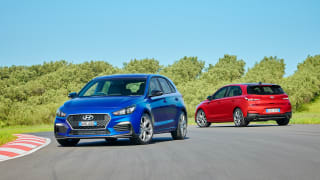
Hyundai i30 Hatch 2021 review: N Line Premium snapshot
The N Line Premium sits at the top of the i30 range with its list price of $34,220. You may have...
Browse over 9,000 car reviews
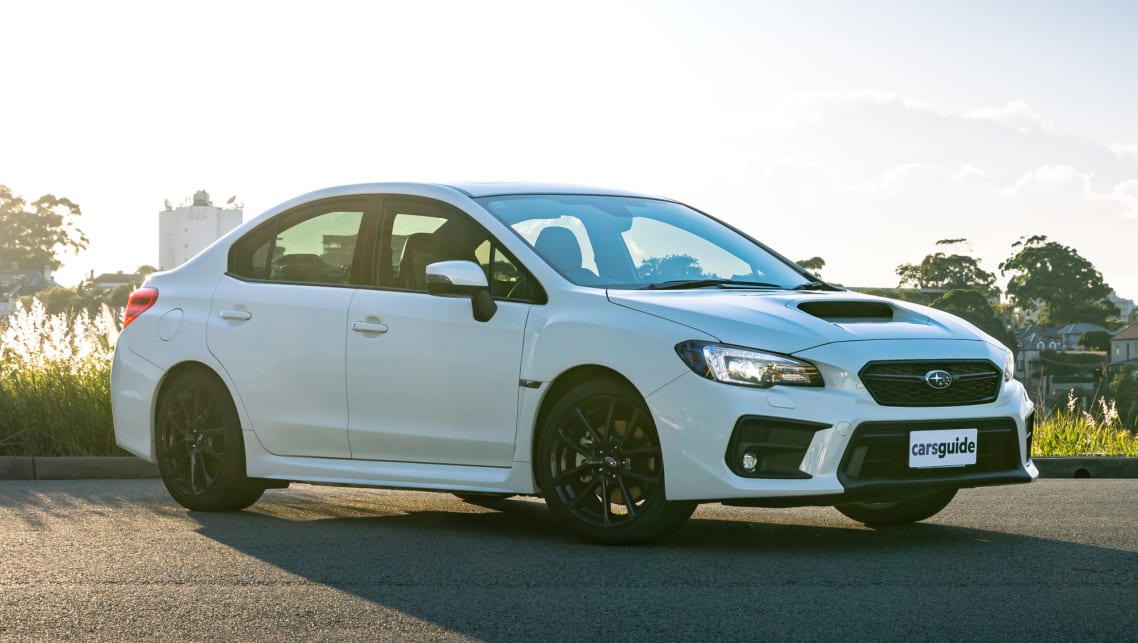
For many folks around my age, the Subaru WRX holds a special place in the heart.
This is because those of us born from the late ‘80s to early ‘90s are the so-called “PlayStation generation.” Growing up at a time where videogames bridged the gap from 2D to 3D leads to a lot of imprinted memories, a lot of digital firsts, which wowed and inspired, and a lot of rapid-fire nostalgia as hardware advancements left once-thriving game franchises in the dust.
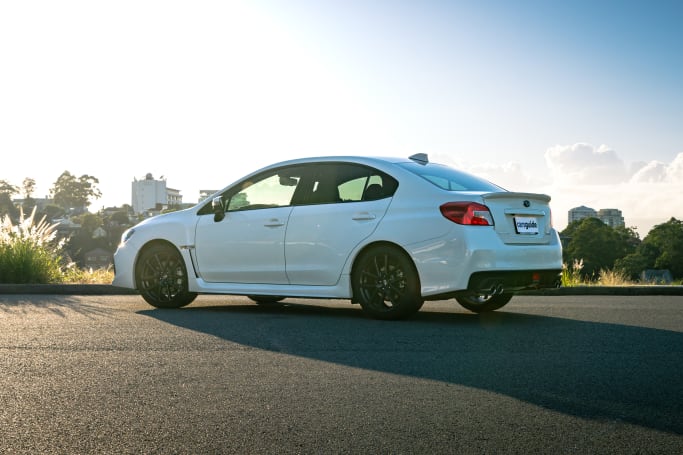
It was also high time for the World Rally Championship's well-regarded Group A rally category, which forced manufacturers to make cars much closer to their production counterparts. It was frequently dominated by none other than the Subaru WRX.
Combine these two worlds and you end up with a lot of kids feeling like they could do anything in Subaru’s newfound performance hero from the comfort of their bedrooms, many of whom would go on to buy a second-hand one to slap P plates on as soon as they could.
It was a perfect storm and made the WRX the right car at the right time to put a previously small-time brand well and truly on the performance map.
The question with this test is: Should those kids, now in their late 20s or 30s, still be considering Subaru’s halo car? Or, now that it’s the oldest product in Subaru’s catalogue, should they wait for the imminent reveal of the new one? Read on to find out.
| Subaru WRX 2021: Premium (AWD) | |
|---|---|
| Safety rating | |
| Engine Type | 2.0L turbo |
| Fuel Type | Premium Unleaded Petrol |
| Fuel Efficiency | 8.6L/100km |
| Seating | 5 seats |
| Price from | $45,870 |
The WRX Premium auto tested for this review is a sort of mid-spec variant. Wearing an MSRP of $50,590, it sits above the standard WRX auto ($43,990), but below the more hard-core WRX STi ($52,940 – manual only).
When you look for rivals, it’s a harsh reminder of the distinct lack of small performance sedans in today’s market. You might consider Subaru’s hero against the front-drive Golf GTi (Auto -$47,190), Skoda Octavia RS (Sedan auto - $51,490), and Hyundai i30 N Performance (manual only - $42,910). There’s a more direct rival coming soon in the form of the i30 N Performance sedan, which will also be available with an eight-speed dual-clutch auto, so look out for that in the near future, too.
While it's now the oldest Subaru on sale by quite a margin, the WRX has been augmented in recent times to offer more up-to-date features.
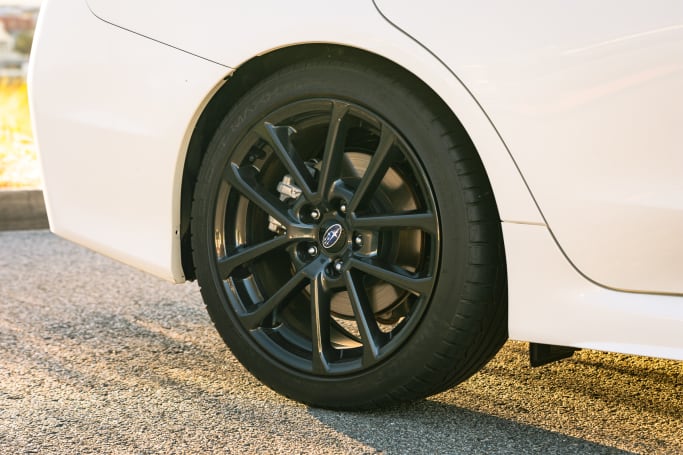
Standard are mean-looking 18-inch alloys clad in skinny Dunlop Sport rubber, full LED lighting, Subaru’s typical assault of screens, including a smallish looking 7.0-inch multimedia touchscreen (mercifully with updated software since I last drove this car), a 3.5-inch multifunction display in the instrument cluster, and a 5.9-inch dash-top-mounted display screen, digital radio, Apple CarPlay and Android Auto connectivity, a CD player (how quaint), leather-accented interior trim, eight-way adjustable power seat for the driver, heated seats for front passengers, dual-zone climate control, and privacy tint for the rear windows.
The continuously variable automatic makes up the majority of WRX sales, so I’m told, which is particularly disappointing to hear. Especially given it’s a $3200 jump over the manual, and tarnishes the drive experience. More on this in the Driving section.
The WRX also comes with a safety suite that is impressive for a car of its vintage, which we’ll look at in the Safety section. Getting on it may be, but the WRX is surprising in how well it holds its own on the value front.
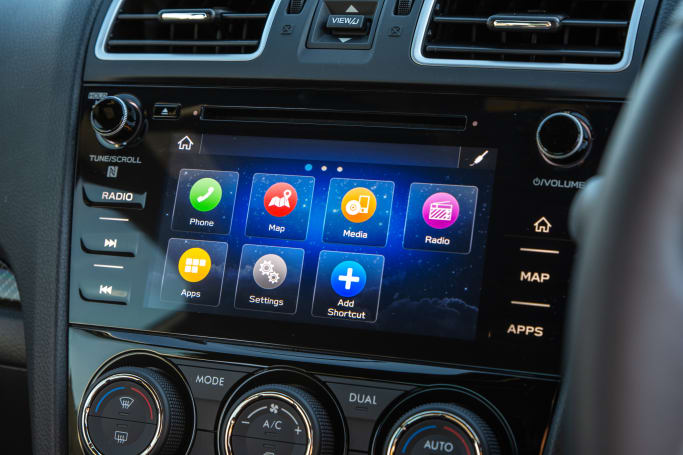
I think Subaru was gunning for subtlety with the non-STi WRX. For a performance car, the design is a little sedate, with the WRX looking perhaps a little conservative to really stand apart from its Impreza sedan sibling, despite diverging from it some years ago.
There’s no mistaking the rally profile of the full-fat STi, with its huge wing and even bigger wheels, but here in the WRX premium it’s all a little toned down. Still, fans will love the absurd bonnet scoop, angry-looking alloys and quad exhaust. It’s stanced out a little by some flared bodywork, but the tiny lip spoiler at the back robs it of a bit of street cred. Perhaps it's to encourage you into the significantly more expensive STi…
Despite its relative age, though, the WRX still fits into Subaru’s lineup nicely. It has all the hallmarks; the small grille, the angled LED headlights, and the signature tall profile. The chunkiness is all there, too, both on the outside, with its flared bodywork and exaggerated scoop, and on the inside, with thick leather clad seat trim, and a chunky, satisfying steering wheel.
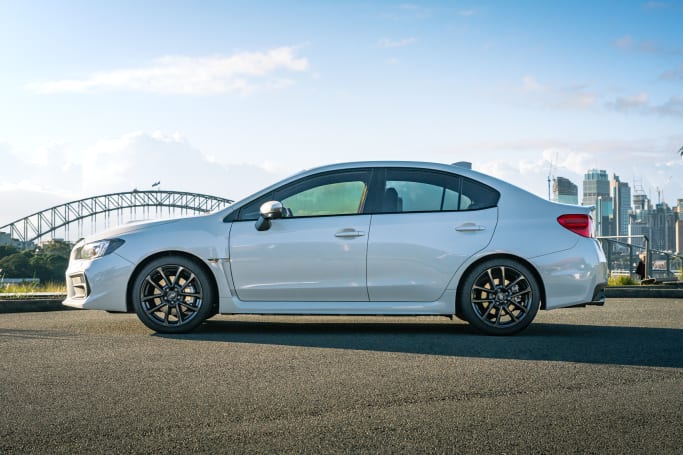
The abundance of red lighting in the dash cluster is reminiscent of the heyday of Japanese performance cars of years past, and while it’s not as plush on the inside as Subaru’s newer products, it’s not disappointing either, with nice use of soft trims.
The plethora of screens feels unnecessary, and the 7.0-inch multimedia unit is feeling very small now, compared to most more recent cars. At least the software has been updated since 2018 to have the more recent system used in the Impreza, Forester, and Outback. It’s simple and easy to use.
Compared to those Subarus, though, the WRX’s interior is feeling a little tired. It’s a bit small, and things like the CD drive and nastier plastic trims smattered around remind of days past for Subaru. It's a good thing the new WRX is coming soon.
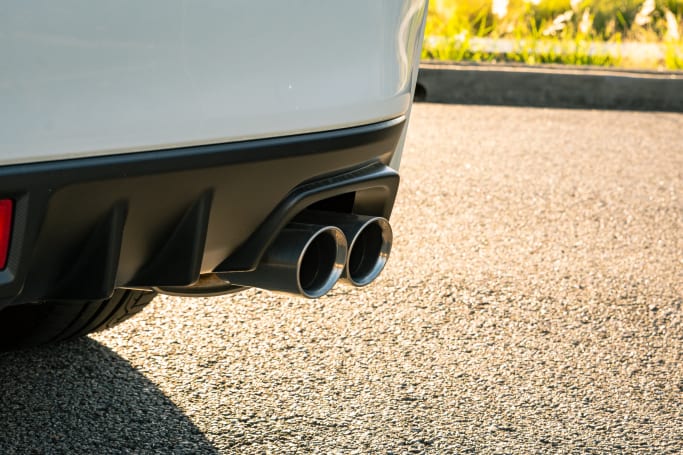
Compared to the more forward-thinking designs in Subaru Global Platfrom vehicles, the WRX is feeling a little claustrophobic on the inside. Still, you could do much worse in a performance car.
Front passengers get nicely trimmed bucket-style seats with good side bolstering. Like a lot of Subarus, the seating position isn’t exactly sporty. You sit quite high, and for someone my 182cm height, it feels as though you’re peering down over the bonnet a little. Aside from that, height adjustability is pretty good from the electric seat, and there is a small bottle holder in the door, plus dual cupholders in the centre, a small centre-console box, and a small tray under the climate unit.
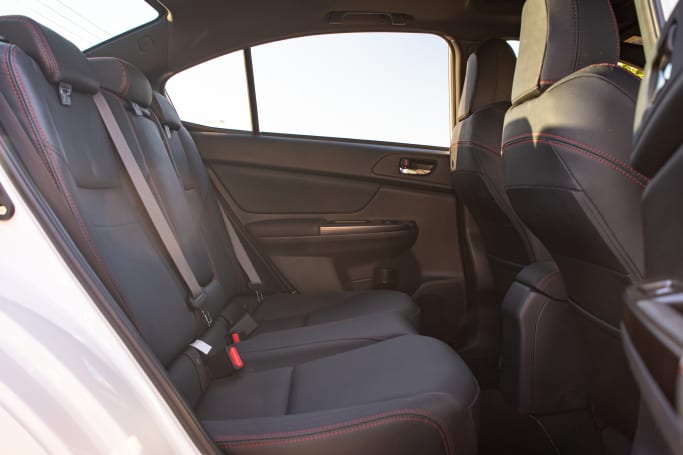
Overall, the dark trims in here conspire to make the WRX’s cabin feel a bit tight. This continues for rear passengers. The WRX really is a small sedan and room isn’t great for me behind my own driving position, with my knees touching the front seat. I have to duck a little to get under the sedan’s roofline to get in, and while the decent trim continues, the seat feels a little high and flat.
Rear passengers get pockets on the backs of the front seats, a drop-down armrest with two cupholders, and a decent bottle holder in the doors. There are no adjustable rear air vents or power outlets, however.
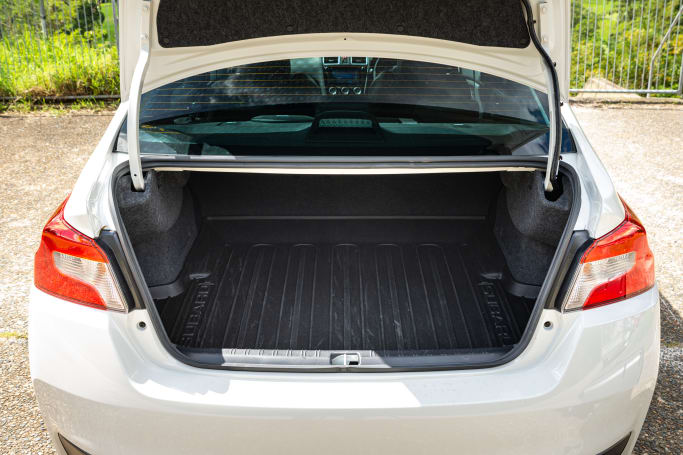
Being a sedan, the WRX has a rather deep boot, coming in at 450-litres (VDA). This rivals some mid-size SUVs, but it’s worth noting the space isn’t quite as usable, with a small loading aperture, and it’s a little tight when it comes to the available height. Still, it consumed our largest 124-litre CarsGuide suitcase with ample space to spare.
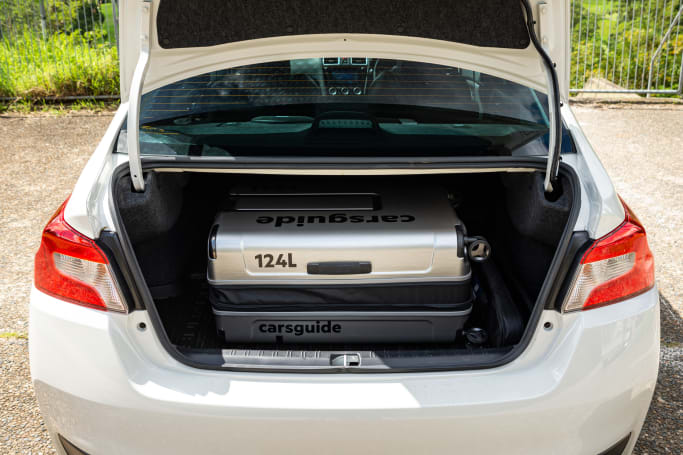
The WRX’s engine is a tuned-up version of Subaru’s signature horizontally opposed “boxer” four-cylinder. In this case it’s a 2.0-litre turbo unit (FA20) producing 197kW/350Nm, ample for a little sedan like this.
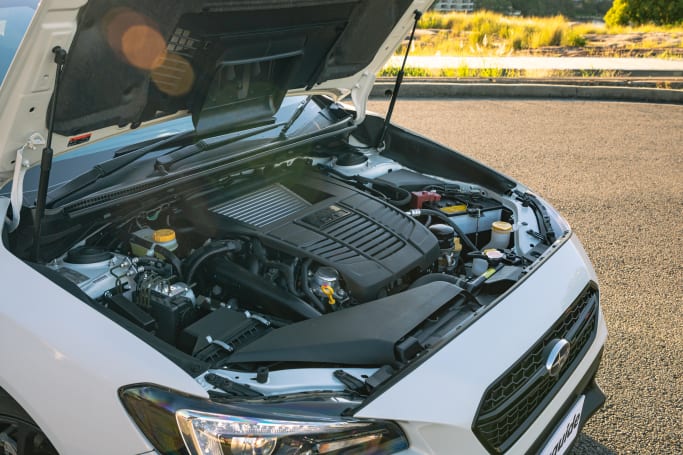
Disappointingly for me, our particular WRX premium was an automatic, and it’s not a great one. While most performance cars will drop in a lightning fast dual-clutch, or at least have the decency to offer a classic torque converter with clearly defined ratios, Subaru falls back on its rubbery continuously variable automatic, as derided in the rest of its mainstream range by enthusiasts.
We’ll explore this more in the Driving section of this review. It’s not as bad as you think it’s going to be, but it still doesn’t belong in a car like this.
Fuel consumption is likely to be at the bottom of your list of concerns when it comes to a small performance sedan, but on the official/combined testing cycle, this car will consume a claimed 8.6L/100km of mid-shelf 95RON unleaded.
Over our week of mostly urban testing, our car produced an unsurprising 11.2L/100km, which is actually under the official urban number of 11.8L/100km. Not bad for a performance car, really.
The WRX has a relatively large fuel tank for its size at 60-litres.
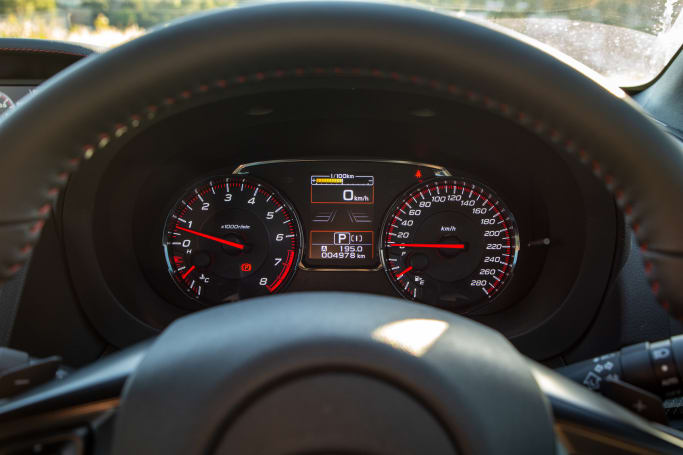
In good news for the WRX, Subaru’s signature EyeSight suite is mostly present here, albeit a slightly older version than the one that appears in its newer products. Regardless, key active items include auto emergency braking (works to 85km/h with brake-light recognition), lane-departure warning with lane-keep assist, blind-spot monitoring with rear cross traffic alert, adaptive cruise control, and auto high beams.
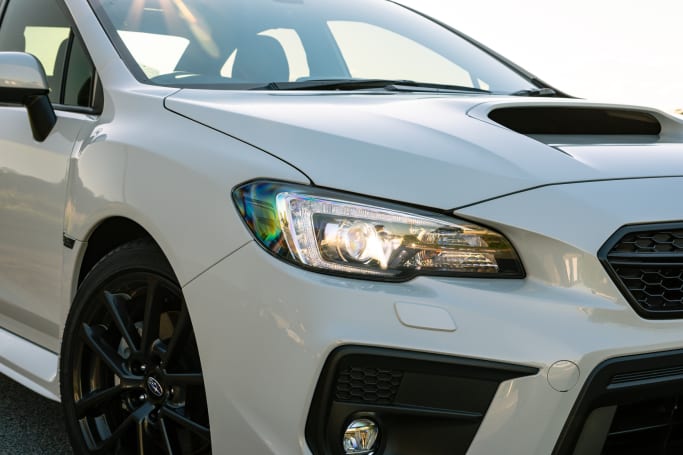
It misses out on reverse auto braking from more modern Subarus but features active torque vectoring to add to the standard suite of electronic aids like traction, brake, and stability controls.
The WRX has a maximum five-star ANCAP safety rating, although it dates way back to 2014, well before active safety items were even considered.
Basic Warranty
5 years / unlimited km warranty
ANCAP Safety Rating

Subaru offers a competitive five-year and unlimited-kilometre warranty promise.
Annoyingly, the WRX requires six-monthly or 12,500km service intervals, a hold-over from Subarus past. It’s not cheap, either, with each six-monthly visit costing between $319.54 and $819.43 (ouch) for the first 10 visits covering five years of ownership. It averages out to $916.81 per year for the first five years. These are numbers which rival some premium European options.
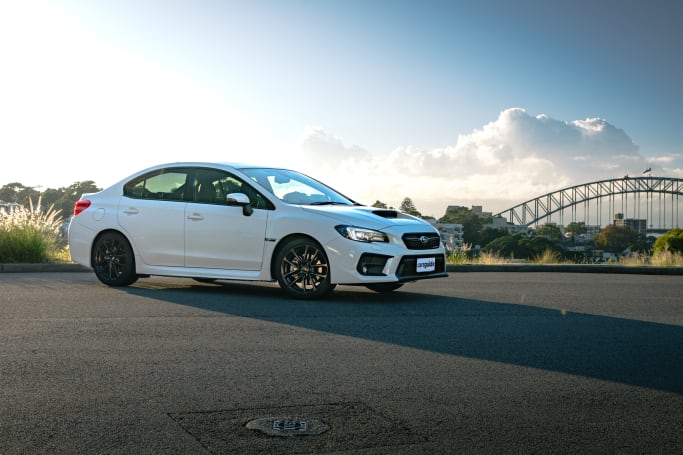
It truly pains me that this car is an automatic. Don’t get me wrong, I’m okay with an automatic performance car. Dual-clutch iterations of cars like the Golf R are great, but the WRX automatic is a CVT.
This transmission isn’t great in the brand’s regular range, let alone in a performance application, where snappy response and a predictable, linear riding out of the rev-range are really necessary to extract maximum enjoyment.
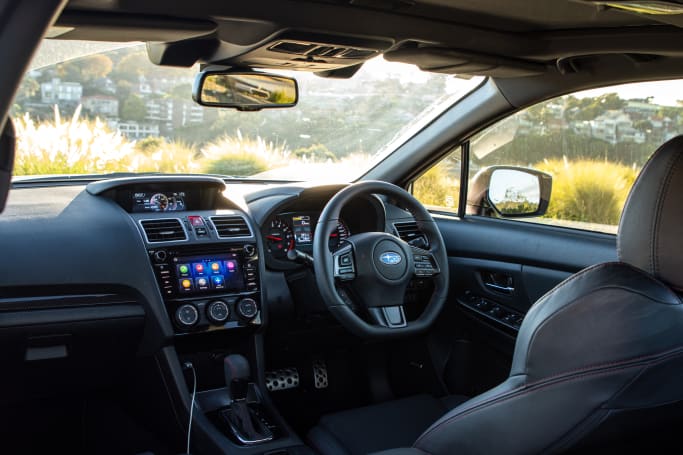
I was surprised to find the CVT isn’t as bad as I thought it would be. Perhaps through sheer torque, the WRX does hammer into its 2400rpm peak torque band rather quickly, for an immediately impressive 0-100km/h sprint of around six seconds, but it’s beyond this point where you’ll start to get dull, rubbery, and occasionally hesitant response from the accelerator. Not particularly appealing attributes when you’re carving up a few corners.
Handling-wise, the WRX is excellent with its robust all-wheel-drive system and firm-to-a-fault suspension. This makes it a true joy to fling around bends, with equally firm and rewarding steering giving you a truly organic and controlled handle on what’s going on at the wheels.
Subaru’s boxer engine gives the WRX a signature gruff sound under acceleration, with some turbo noise to boot, but with this particular transmission you won’t be getting the satisfying turbo blips you can extract with a swift kick of a clutch pedal in the manual.
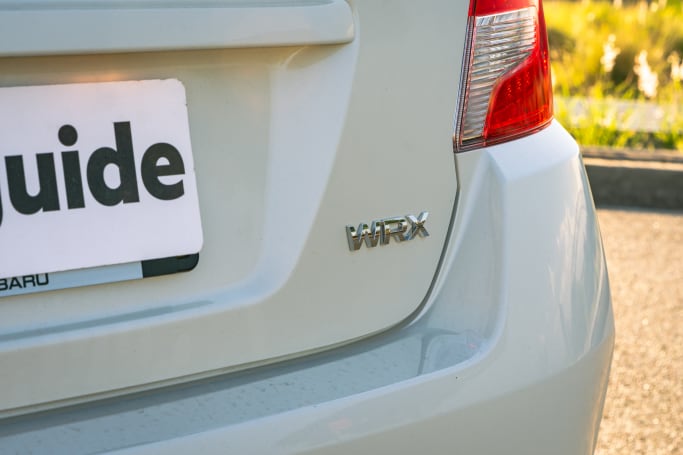
Driving it around town every day is a little rough, with a brittle and busy ride, while the heavy steering will get on your nerves when you’re just trying to park the thing.
The firm ride, large wheels, and slim tyres makes the cabin noisy at all speeds, and occasionally sends shockwaves through the front of the car if you’re unfortunate enough to hit a pothole. It’s hardly the most pleasant companion to have on a freeway.
Honestly, if you’re after an automatic performance car, there are better options out there both in terms of response and everyday comfort, although none are quite like a WRX. I’d implore you to pick the manual if you can, it’s a better, more engaging experience in every way.
Although it's now the oldest car in Subaru’s catalogue, there’s nothing really quite like the WRX on the market. This is a car which is true to its roots, a rugged performance stalwart that comes with dollops of fun and compromise in equal measure.
Thanks to Subaru’s updates over the years, it’s fared better than some when it comes to technology and safety, but I’d still implore you to pick the manual to truly experience this car as nature intended.
| Vehicle | Specs | Price* | |
|---|---|---|---|
| STI Spec R (wing) (awd) | 2.5L, PULP, 6 SP MAN | $54,560 – 62,700 | 2021 Subaru WRX 2021 STI Spec R (wing) (awd) Pricing and Specs |
| STI Premium (wing) (awd) | 2.5L, PULP, 6 SP MAN | $52,910 – 60,830 | 2021 Subaru WRX 2021 STI Premium (wing) (awd) Pricing and Specs |
| (AWD) | 2.0L, PULP, CVT AUTO | $39,490 – 46,420 | 2021 Subaru WRX 2021 (AWD) Pricing and Specs |
| STI (awd) | 2.5L, PULP, 6 SP MAN | $48,180 – 55,440 | 2021 Subaru WRX 2021 STI (awd) Pricing and Specs |
| Price and features | 7 |
|---|---|
| Design | 7 |
| Practicality | 7 |
| Under the bonnet | 8 |
| Efficiency | 8 |
| Safety | 8 |
| Ownership | 7 |
| Driving | 8 |
$36,888
Lowest price, based on 24 car listings in the last 6 months